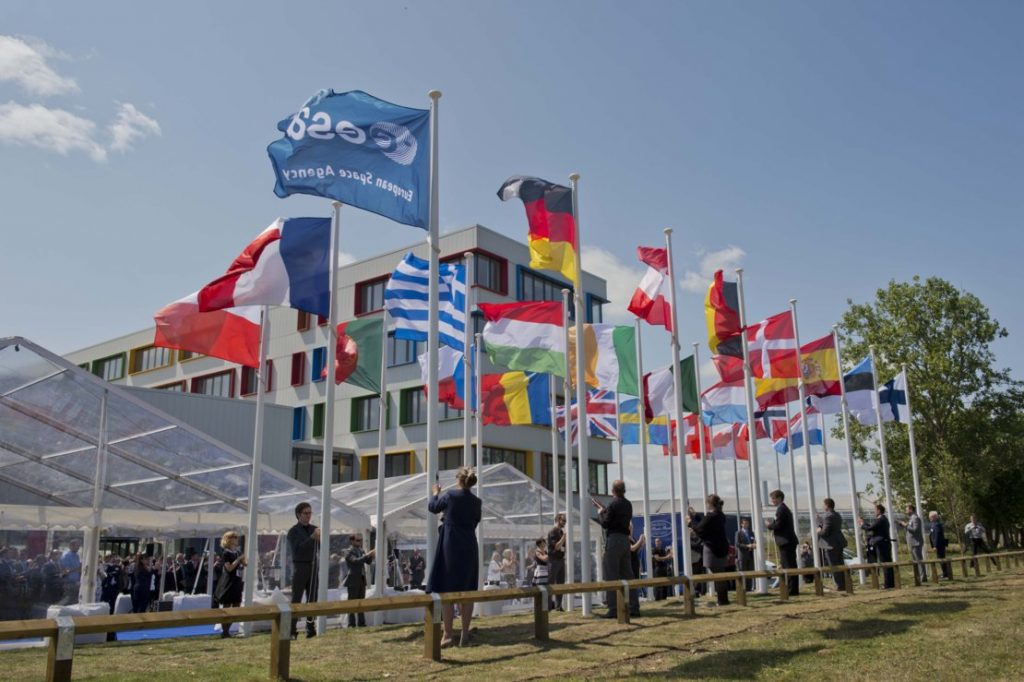In previous blogs, I have presented my views about the current European situation in space. Now, after many discussions at various levels, the time has come to go from the fiction of “United Space in Europe” to the action of “unite space in Europe!”.
We are facing dramatic changes in the space landscape. Not only is the commercial part of space changing, the public sector is as well. More and more national public space entities are being created, including space agencies, a clear sign in itself of the high degree of relevance of space to daily life.
As I explained in my previous blog post: last century, in the 1960s, two European space entities were created – ESRO (the European Space Research Organisation) and ELDO (the European Launcher Development Organisation) – that would later form the basis of ESA, the European Space Agency. ESA’s Convention was finalised in 1975. Since then, 22 European states have ratified this Convention, in so doing becoming committed member states of ESA. Through national ratification, the Convention, an international treaty, assumes the status of national law.
Based on the unique position of ESA at the time as the only multinational space agency in Europe, the Convention defines the purpose of the Agency in broad terms, including:
• Elaborating and implementing a long-term European space policy;
• Elaborating and implementing space activities and programmes;
• Coordinating the European space programme and national programmes;
• Integrating the national programmes as completely as possible into the European space programme; and
• Elaborating and implementing a European industrial policy.
All of this has led, since the very beginning, to an extremely well-developed European space ecosystem across all fields. Europe today is recognised as a major space player, thanks to the commitment of Member States to the functioning of ESA as a common endeavour.
Institutional links between ESA and the national entities responsible for space such as ESA_sites and ESA_Hubs can help bring about the coherent European space policy called for in the ESA Convention while still leaving room for diverse interests and capabilities.

The underlying idea is to support the interaction of national activities and ESA activities for the benefit of the Member States, ESA and Europe at large.
Based on this idea, the organisation and coordination of the ESA activities of the respective Member States in space, as well as complementary national space activities, can follow the same objectives.
In addition to national and ESA space activities, the European Union is developing its own space activities in accordance with the Lisbon Treaty. Taken as a whole, the benefit to society and the economy of all this growth and added value generated within the space sector is enormous. Now it is time to identify and pursue the best means of developing European space overall while avoiding additional bureaucracy and unnecessary duplication, as already called for in the ESA-EU Framework Agreement of 2004.

United Space in Europe, United Europe in Space
A few weeks prior to the European elections, we should look ahead for joint activities, the European citizens and Europe deserve it.
The examples of Copernicus and Galileo proofed that cooperation of ESA and EU is possible and fruitful: The jointly financed Copernicus programme implemented by ESA is the best Earth observation programme worldwide and Galileo, mainly financed by EU, developed and implemented by ESA secures European autonomy in satellite navigation.
At a European level, parallel actions need to be coordinated as it is clear that efficiency is absolutely paramount when using taxpayers’ money. Whenever the subject of coordination comes up, however, the immediate reaction is that EU rules and ESA processes are simply not compatible. Yet, we see how in the motor industry a single company manages to build trucks, SUVs, large and small cars with diesel, petrol, electric or even hybrid engines, all using different technologies and subject to different requirements. We should therefore look to future organisational setups that allow an efficient use of resources so that we can optimise European competitiveness in space while maintaining the respective advantages of our different rules and processes. Such advantages include, in the case of ESA, programmes (mandatory and optional) directly defined and controlled by Member States and georeturn acting as an effective instrument for industrial development across Europe while the EU, for its part, can offer a wide political impact and a host of downstream opportunities.
One specific area where I see a clear opportunity is in an institutional linkage between a GSA having acquired increased responsibility with the engineering, scientific and procurement competences of ESA. We should set ourselves the goal of finding an organisational setup which combines those different profiles in the interests of maximum efficiency, effectiveness and competitiveness for Europe as a whole.

Discussion: no comments